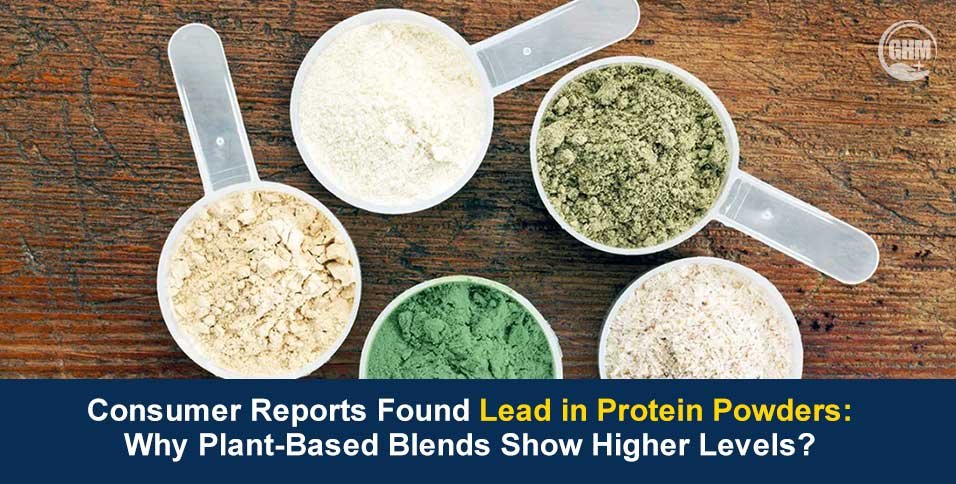Ever thought that “vegan” and “keto” were two dietary paths that could never cross? One is rooted in plants, the other in high-fat principles. It sounds like a nutritional paradox, doesn’t it? Yet, what if merging them created something extraordinary? The vegan keto diet plan does just that, challenging everything you thought you knew about nutrition. It promises the powerful metabolic state of ketosis, all while staying true to a 100% plant-based ethos.
Forget the confusing advice you’ve read elsewhere. This is your definitive, scientifically-grounded roadmap. We’re about to dive deep into how you can achieve and sustain plant-powered ketosis, transforming your health from the inside out. Are you ready to discover if this revolutionary approach is the key to a more vibrant you?
1. Plant-Powered Ketosis: How the Vegan Keto Diet Plan Works
So, what exactly is ketosis? Think of it as a metabolic flip-switch. When you drastically reduce your carbohydrate intake (typically to under 50 grams per day), your body runs low on its usual fuel, glucose.
Instead of shutting down, it smartly pivots and starts burning fat for energy. This process, happening in your liver, creates molecules called ketone bodies.
The star player among these is β-hydroxybutyrate (BHB). It’s not just a backup fuel; it’s a premium energy source for your body and brain. BHB also acts as a signaling molecule, potentially influencing everything from gene expression to how we age. Essentially, ketogenesis turns stored and dietary fat into clean-burning energy.
Now, the vegan keto diet plan takes these exact principles and applies them to a framework free of all animal products. That means no meat, fish, dairy, or even honey. Achieving this requires smart planning to hit your nutrient targets and stay in that fat-burning zone.
The macronutrient breakdown you’ll be aiming for looks like this:
- Fat: 55-60% of your daily calories
- Protein: 30-35% of your daily calories
- Net Carbs: 5-10% of your daily calories
To stay on track, you’ll need to calculate your “net carbs.” But what about fiber? Here’s the simple formula:
NetCarbs = Total Carbohydrates − Fiber
Since your body doesn’t digest fiber, it doesn’t spike your blood sugar. Subtracting it gives you the true carb count that affects ketosis.
2 . The Non-Negotiable Pre-Launch Protocol
Before you jump into this new lifestyle, hitting the pause button for a pre-launch check is crucial. This isn’t just a diet change; it’s a significant metabolic shift, and preparing your body properly will ensure a smoother, safer transition.
- Medical Consultation
First things first: have a conversation with your physician or a registered dietitian. This step is non-negotiable. A professional can look beyond the number on the scale or how you feel, monitoring crucial internal changes. They’ll assess your current health, flag any potential contraindications, and provide personalized advice to ensure your goals align with long-term wellness.
- Mitigating the “Keto Flu”
Heard of the “keto flu”? It’s a temporary set of symptoms that can pop up as your body adapts. You might experience headaches, fatigue, nausea, irritability, or brain fog. One of the main culprits is often an electrolyte imbalance.
Here’s how to sidestep the worst of it:
- Hydration: Make water your best friend. Sipping throughout the day is key to supporting your kidneys and staying hydrated.
- Electrolyte Balance: As carbs drop, you can lose key electrolytes. You’ll need to consciously replenish sodium, potassium, and magnesium through electrolyte-rich foods, broths, or quality supplements.
- Critical Nutrient Watchlist
Going vegan keto means you’re eliminating two major food groups, which puts you at a higher risk for certain nutrient gaps. Vigilance and smart supplementation are your keys to success.
Keep these essential nutrients on your radar:
- Vitamin B12: Found almost exclusively in animal products, making supplementation mandatory for anyone on a vegan diet. A deficiency can lead to serious, sometimes irreversible, health issues.
- Iron: Plant-based iron isn’t absorbed as efficiently as its animal-based counterpart. Load up on lentils and spinach, but you may still need a supplement to prevent anemia.
- Omega-3s: The most potent forms, EPA and DHA, come from fatty fish. While flax and chia seeds provide a precursor (ALA), an algal oil supplement is the best way to get the EPA and DHA your brain needs.
- Calcium: With dairy off the table, turn to fortified plant milks, tofu, and leafy greens. A supplement might be necessary to protect your bone health and prevent osteopenia.
- Vitamin D: Often called the “sunshine vitamin,” it’s also found in fortified animal products. To ensure you’re getting enough, rely on fortified vegan foods and a high-quality vegan D3 supplement.
- Zinc: It can be tricky to get enough zinc from plants alone. Pumpkin seeds and cashews are great sources, but keep an eye on your levels.
- Iodine: Some plant-based diets can fall short on iodine. Use iodized salt or incorporate iodine-rich foods like seaweed in moderation.
3. The Vegan Keto Culinary Masterclass
Think this diet means sacrificing flavor? Think again. With a little creativity, your vegan keto meals can be incredibly delicious and satisfying.
Building Your Plate
Knowing what to eat and what to avoid is the foundation of your success.
- Eat Freely:
- Healthy Fats: Avocados and their oil, coconut oil, olive oil, MCT oil, and nuts like macadamias, pecans, and almonds. Don’t forget seeds like chia, flax, hemp, and pumpkin!
- Non-Starchy Vegetables: Load up on leafy greens (spinach, kale), broccoli, cauliflower, zucchini, asparagus, and mushrooms. Bell peppers are great in moderation.
- Plant-Based Proteins (in moderation): Tofu, tempeh, and nutritional yeast are your staples. Seitan can work, but always check its carb content.
- Herbs and Spices: Go wild! These are your carb-free ticket to amazing flavor.
- Eat in Moderation:
- Berries: A small handful of low-carb options like raspberries or blackberries.
- Certain Nuts/Seeds: Cashews and pistachios are a bit higher in carbs, so watch your portions.
- Fermented Foods: Sauerkraut and kimchi are great, but check the label for added sugars.
- Strictly Avoid:
- Grains: All of them. Wheat, rice, oats, corn, quinoa, and any products made from them (bread, pasta).
- Legumes (high carb): Beans, lentils, and chickpeas are generally too high in carbs.
- Starchy Vegetables: Potatoes, sweet potatoes, carrots, and peas are off the menu.
- Fruits (most): Say goodbye to high-sugar fruits like apples, bananas, and mangoes.
- Sugars and Sweeteners: This includes refined sugar, maple syrup, and agave. If you need a sweetener, opt for stevia or erythritol in moderation.
- Processed Foods: Many packaged vegan items are loaded with hidden sugars and starches. Always read the label.
- The Flavor Matrix
Ready to become a flavor wizard? Here are the secrets to making your food pop.
- Fats as Flavor Carriers: Healthy fats aren’t just for macros; they make everything taste better. Sautéing your veggies in high-quality olive, avocado, or coconut oil elevates them instantly.
- Herbs and Spices: These are your secret weapons. They add incredible depth and complexity for zero carbs, and they come packed with antioxidant benefits. Think garlic powder, turmeric, cumin, and rosemary.
- Umami Sources: Craving that savory, cheesy flavor? Nutritional yeast is your answer. It’s a vegan staple for a reason! Tamari and mushroom powders also deliver a powerful umami punch.
- Diverse Textures and Sauces: Avoid meal fatigue by playing with texture. Add crunch with toasted nuts or keep things smooth with a creamy avocado-based sauce. A rich, flavorful sauce can turn a simple dish into a masterpiece.
- Optimal Meal Timing
While hitting your macros is priority number one, some people find success with meal timing strategies like Intermittent Fasting (IF). The popular 16:8 method (fasting for 16 hours, eating in an 8-hour window) can sometimes deepen ketosis.
However, if you’re just starting, focus on mastering your food choices first. Think of IF as a potential upgrade for later, not a day-one requirement.
4. Your Comprehensive 7-Day Vegan Keto Meal Plan
To get you started, here is a delicious and fully compliant 7-day meal plan. It’s designed to make your first week on the vegan keto diet plan both simple and enjoyable.
Day 1
- Breakfast: Tofu Scramble with spinach, mushrooms, and nutritional yeast, cooked in avocado oil.
- Lunch: Large Salad with mixed greens, avocado, cucumber, bell peppers, hemp seeds, and a lemon-tahini dressing.
- Dinner: Cauliflower Rice Stir-fry with tempeh, broccoli, a few snap peas, and a tamari-ginger sauce.
- Snack: A handful of macadamia nuts.
Day 2
- Breakfast: Keto Smoothie made with unsweetened almond milk, spinach, almond butter, chia seeds, and a scoop of vegan protein powder.
- Lunch: Lettuce Wraps filled with seasoned crumbled tofu, a little shredded carrot, and a sugar-free spicy peanut sauce.
- Dinner: Zucchini Noodles with a creamy avocado pesto (avocado, basil, pine nuts, garlic, olive oil) and cherry tomatoes.
- Snack: Sliced avocado with everything bagel seasoning.
Day 3
- Breakfast: Chia Seed Pudding made with unsweetened coconut milk, topped with a few raspberries and shredded coconut.
- Lunch: Leftover Zucchini Noodles with creamy avocado pesto.
- Dinner: Roasted Brussels Sprouts and Asparagus with baked, seasoned tempeh slices, drizzled with olive oil.
- Snack: Olives.
Day 4
- Breakfast: Vegan Keto Pancakes made with almond flour and flax eggs, topped with sugar-free syrup and a few blueberries.
- Lunch: Large Green Salad with roasted cauliflower, pepitas, and a creamy cashew dressing.
- Dinner: “No-Meat” Loaf made from mushrooms, walnuts, and flaxseed, served with a side of sautéed kale.
- Snack: Almonds.
Day 5
- Breakfast: Avocado Toast on a slice of keto-friendly vegan bread (check net carbs!), topped with chili flakes.
- Lunch: Leftover “No-Meat” Loaf with sautéed kale.
- Dinner: Coconut Curry with tofu, broccoli, and bell peppers, cooked in full-fat coconut milk.
- Snack: Celery sticks with almond butter.
Day 6
- Breakfast: Tofu Scramble with bell peppers and onions (in moderation), seasoned with turmeric.
- Lunch: Vegan Keto “Tuna” Salad (using mashed avocado and celery instead of chickpeas) served in lettuce cups.
- Dinner: Baked Portobello Mushrooms stuffed with a mixture of spinach, nutritional yeast, and vegan cream cheese.
- Snack: Walnuts.
Day 7
- Breakfast: Keto Smoothie with almond milk, cacao powder, avocado, and a dash of cinnamon.
- Lunch: Large Green Salad with hemp hearts, avocado, and a simple vinaigrette.
- Dinner: Vegan Keto Pizza on a cauliflower crust, topped with sugar-free tomato sauce, vegan mozzarella, mushrooms, and olives.
- Snack: Pumpkin seeds.
5. The Unbiased View: Benefits vs. Inherent Challenges
Let’s take a balanced look. This diet offers some incredible benefits, but it also comes with real challenges that you need to be aware of.
- Benefits
- Weight Management: Many people turn to keto for weight loss, and for good reason. Studies suggest it can be highly effective, and the high fat and protein content keeps you feeling full, which can naturally reduce your overall calorie intake.
- Blood Sugar Control: By slashing carb intake, this diet has a profound impact on blood glucose levels. This makes it a powerful tool for those managing type 2 diabetes or seeking better glycemic control.
- Mental Clarity: Once adapted, many people report a state of sharp mental clarity and steady energy. This is often attributed to the brain running on a consistent supply of ketones.
- Challenges
- Highly Restrictive Nature: There’s no sugar-coating it: this diet is tough. Adhering to both vegan and keto rules drastically narrows your food choices, which can be difficult to maintain long-term.
- Risk of Nutrient Gaps: Eliminating entire food groups requires careful planning to avoid deficiencies in key nutrients like Vitamin B12, iron, calcium, and omega-3s. Supplementation isn’t just a suggestion; it’s often a necessity.
- Social Difficulties: Eating out or attending social events can become a major challenge. The diet’s strictness can sometimes lead to feelings of isolation if you’re not prepared.
- Potential Cost: Building a well-rounded vegan keto pantry can be more expensive. Specialized products, quality supplements, and certain fats can add up.
My Opinion
Well, I see the vegan keto diet plan as a fascinating intersection of metabolic science and plant-based ethics. It can deliver remarkable results for weight management and blood sugar control when followed with absolute precision. However, its restrictive nature is not to be underestimated. Success demands an unwavering commitment to meticulous nutrient planning and supplementation to prevent serious deficiencies.
This advanced dietary strategy is best suited for disciplined individuals with clear health goals, and I cannot stress this enough: it should only be undertaken with the ongoing guidance of a qualified healthcare professional. Approach the vegan keto diet plan with diligence, and it can be a powerful tool for your health.
Found this guide helpful? Don’t keep it to yourself! Be the person who shares valuable knowledge and empowers others on their health journey by sharing this article with your friends and family!



















